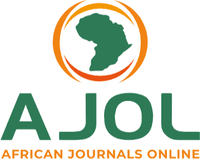Disinfectant Activity of Eucalyptus globulus Leaves Extracts Against MRSA and ESBL Producing Pseudomonas aeruginosa Isolated From Hospital Environment
DOI:
https://doi.org/10.56892/bima.v8i2.660Keywords:
Eucalyptus globulus; Disinfectant; MRSA; ESBL-producing Pseudomonas aeruginosa; Phenol coefficientAbstract
Increasing resistance of bacterial isolates from hospital surfaces to antimicrobials is worrisome and require urgent intervention. This study aimed to assess the disinfectant potential of Eucalyptus globulus leaf extract against Methicillin resistance Staphylococcus aureus (MRSA) and extended spectrum beta lactamase (ESBL)L-producing Pseudomonas aeruginosa isolated from hospital environments. The plant leaf was extracted using methanol, ethanol, water, ethyl acetate, and hexane solvents using maceration method. The extracts were then screened for alkaloids, flavonoids, saponins, anthraquinones, tannins, glycosides, and steroids using standard methods. Isolates of S. aureus and P. aeruginosa from various hospital surfaces were subjected to Gram staining and biochemical tests, with MRSA confirmed via cefoxitin susceptibility and ESBL production confirmed via a combined disc test. Confirmed strains were tested against the plant extracts using agar well diffusion. Additionally, the disinfectant potency was compared to phenol, establishing the phenol coefficient (Pc). Results indicated extraction yields of 20.09%, 11.76%, 11.53%, 2.72%, and 0.26% for water, methanol, ethanol, ethyl acetate, and hexane, respectively. The aqueous extract exhibited the highest inhibitory effect against MRSA (20mm-27mm), while the ethyl acetate extract showed moderate inhibition against ESBL-producing P. aeruginosa (9mm-12mm). The phenol coefficient for the aqueous extract against MRSA was >1, suggesting greater efficacy compared to phenol, whereas against ESBL-producing P. aeruginosa, it was <1, indicating lower efficacy compared to phenol. Overall, the presence of phytochemicals in E. globulus leaf extracts contributed to their inhibitory activity against MRSA but showed less effectiveness against ESBL-producing P. aeruginosa.





